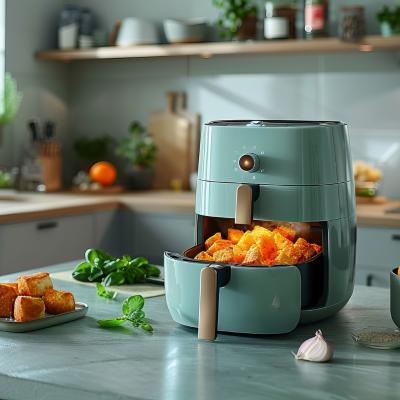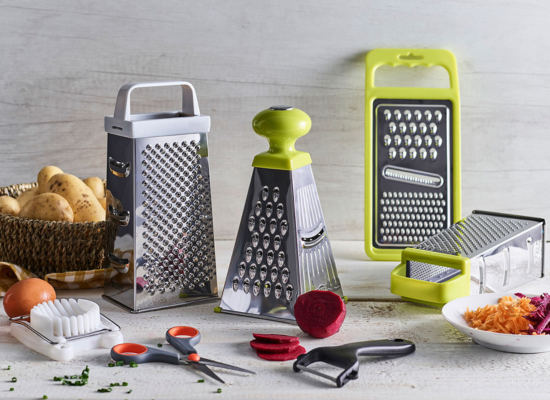
You probably have a microwave at home which you frequently use. However, do you often wonder what the highest temperature a microwave can reach? You’ll be surprised by the answer.
In reality, there is no maximum temperature a microwave can reach. Microwaves don’t have any heating elements in them. Therefore, they do not heat themselves. It is the food/object within the microwave that heats up. However, since most foods contain water, the highest temperature they can reach is 212 degrees Fahrenheit (100 degrees Celsius).
In the rest of the article, we will answer several questions about how a microwave works, such as:
- maximum temperature a microwave can get
- highest temperature an object can reach in a microwave
- difference between low & high watt microwaves
- How quickly can a microwave get to its highest temperature?
- Things that affect the temperature in a microwave
- Can a microwave get too hot and shut down?
What Is the Maximum Temperature a Microwave Can Get?
As reiterated earlier, a microwave doesn’t get hot. Only the food within the microwave gets hot. Because most foods contain liquid, the highest temperature they can reach is 100 degrees Celsius or 212 degrees Fahrenheit.
Therefore, you can’t measure the temperature of a microwave as you would that of an oven. This is because microwaves don’t have any heating elements within them. Therefore, they can’t generate heat.
The body of the microwave can get warm while it’s reheating food. However, that’s where it ends.
Microwaves heat food and liquids by turning electricity into microwaves. These microwaves are what heat the water within food or liquid items.
Thereby cooking, defrosting, or reheating food. During this time, no part of the microwave gets hot. Only the food and the container in which the food is in.
Therefore, there is no maximum temperature that a microwave can get to. The right question is, “what’s the highest temperature an object can reach in a microwave?”
LEARN MORE: How to Microwave Taco Bell Wrappers
The Highest Temperature an Object Can Reach in a Microwave
As you’ve seen, microwaves don’t get hot. If they get hot, they are seriously malfunctioning and need to get checked out. Microwaves can only produce hot liquids and foods.
How hot the temperature within a microwave depends on what is being heated and whether it’s plain liquid or food. But to answer the question, objects in microwaves typically don’t get hotter than the boiling point of water. That’s about 100 degrees Celsius or 212 degrees Fahrenheit.
With that said, solid food items usually won’t get past that point. They’ll lose all the moisture within them and become inedible if they do.
On the other hand, pure water can reach a temperature of about 248 degrees Fahrenheit. However, the water has to be pure, the container without any scratches or cracks, and the process goes on uninterrupted.
However, most microwaves have a safety feature that prevents this from happening.
Difference Between Low & High Watt Microwaves Temperature
One of the most critical factors to look at when buying a microwave is wattage. Wattage represents power, and the temperature varies depending on that.
The higher the microwave’s wattage, the faster and more efficient it is at cooking your food at a higher temperature. Low-wattage microwaves generally take longer to cook food as they produce less heat.
For instance, a 1,000-watt microwave will cook your food quicker and more evenly. Additionally, it’ll be more efficient for a family that uses it more often. On the other hand, a low-watt microwave is more efficient for small apartments or people who live alone.
They are generally slower at cooking your food. However, they are more gentle on your food and can heat delicate food items without causing any damage.
Most microwaves have a watt range of between 600 watts and 1,200 watts. This measurement is critical as it tells you how powerful your microwave is.
A high-watt microwave is more expensive than a low-watt microwave. Remember that next time you are budgeting for a microwave.
How Quickly Can a Microwave Get to Its Highest Temperature?
How quickly a microwave can get to a high temperature depends on how much power they are running at & the type of food being heated.
A microwave’s highest temperature after 30 seconds is about 248 degrees Fahrenheit. That is if it’s heating pure water only. However, the most average microwaves get to a high of between 150 to 180 degrees Fahrenheit in 30 seconds.
The temperature also verifies depending on how long you leave your food in the microwave. An average microwave takes about 2 minutes to heat food to 170 degrees Fahrenheit.
However, if you leave water in the microwave, the highest temperature it can hit is 212 degrees Fahrenheit in about 60 seconds.
If you are heating something like frozen pizza, you will typically leave it in the microwave for 4 to 5 minutes. During this time, the temperature can increase from about 212 to as high as 300 or 400 degrees Fahrenheit.
Things That Affect the Temperature in a Microwave
Many things affect the temperature within a microwave. They include:
- Wattage and Power of the Microwave: Wattage determines how much power is used to generate microwaves needed to cook food. A high-watt microwave generally generates more microwaves. Thus, heating food faster. A low-watt microwave will typically produce fewer microwaves, which results in food cooking for longer.
- Size & Shape of Food: As you may have noticed, more oversized food items typically take longer to heat. This is because the produced microwaves take longer to penetrate and heat the food. The shape of the food also determines how long it takes to cook. Usually, curved, convoluted, or large food items take longer to cook evenly.
- Moisture in the Food: Food items that contain a higher moisture level will generally heat up more quickly. This is because water molecules inside the food vibrate and generate heat as they get microwaved. The more the water molecules, the higher the heat generated.
- Size of the Cooking Chamber: Microwaves that contain a large cooking chamber typically take longer to heat food. This is because the microwaves generated normally travel for longer to get to the food. Therefore, there is decreased contact with food, which increases the time needed to cook the food.
- Microwave Design: You will notice that microwaves with better ventilation usually warm/cook food faster. This is because they allow steam to get released, allowing the food to continue cooking evenly.
LEARN MORE: How to Reheat Philly Cheesesteak in Microwave?
Can a Microwave Get Too Hot & Shut Down?

Yes. It’s possible that a microwave can overheat and automatically shut off. All microwaves have a safety-shutdown feature that gets activated to prevent overheating.
If a microwave overheats and shuts down, high voltage components within the microwave are getting too hot.
Once you let the microwave cool down, the thermal switch will reset automatically, and the microwave will continue with normal functioning. However, if it does continue to get too hot, this might indicate a problem with a microwave component such as the fan.
All microwaves are fitted with fans to ensure that they cool the microwave as it cooks food. It’s the noise you hear while you are microwaving. However, if the fan fails to function, the microwave may not be able to remain calm and, therefore, overheat in the process.
Another possible reason is that the sensors dedicated to detecting rising heat temperature might be faulty. This will cause the temperature inside the microwave to get too hot.
Final Thoughts
As you can see, it’s not the microwave itself that heats to the highest temperature up but the food within it. How hot the food items in the microwave get depends on several factors.
However, the microwave will heat moisture elements within the food to cook it most of the time. Therefore, the maximum temperature that food within a microwave can get to is 212 degrees Fahrenheit or 100 degrees Celsius.
As for water, if it’s pure water, the chances are that it can reach a high temperature of 248 degrees Fahrenheit. Any other temperature above that and the water turns into steam/gas.
Therefore, next time you use a microwave, remember that it can get up to temperatures of between 150 to 180 degrees F in 30 seconds. A higher temperature too if food is left in the microwave for much longer.



